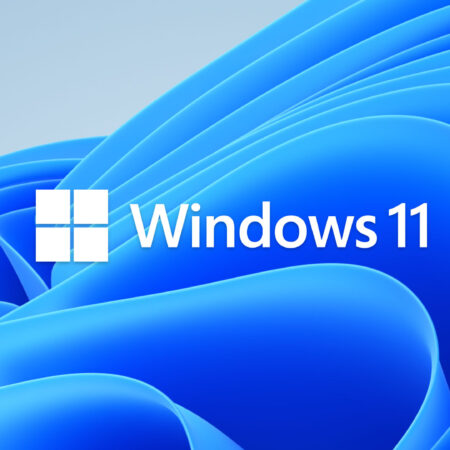In 2024, Amazon’s Project Kuiper entered a crucial phase as it began offering early satellite services to consumers. This ambitious venture is Amazon’s direct challenge to SpaceX’s Starlink, with the goal of providing high-speed, low-latency internet through a vast satellite constellation. Aimed primarily at underserved and remote regions, Project Kuiper promises to revolutionize global internet connectivity. Here’s an in-depth look at the project’s evolution and its implications for the future.
1. What is Project Kuiper?
Announced in 2019, Project Kuiper represents Amazon’s entry into the growing satellite internet market. Much like SpaceX’s Starlink, Kuiper plans to create a constellation of satellites in low Earth orbit (LEO), designed to deliver high-speed, low-latency broadband services to areas with limited or no access to traditional broadband infrastructure. The project’s name is a nod to the Kuiper Belt, a region of the solar system beyond Neptune filled with small, icy bodies—a symbol of the vastness of the areas Kuiper aims to connect.
Amazon’s proposal to the Federal Communications Commission (FCC) outlined a plan to launch over 3,200 LEO satellites into space, divided into different orbital shells, ensuring consistent global coverage. The primary aim is to connect remote and underserved areas, but as the project matures, it will target a broad consumer base, potentially providing internet service to millions.
2. 2024 Launch and Rollout
After years of preparation, research, and development, Project Kuiper achieved a significant milestone in early 2024 with its first satellite launches. These were conducted using United Launch Alliance’s (ULA) Atlas V rockets, with more launches planned as the constellation expands.
While early services are being rolled out to select regions, Kuiper is expected to continue expanding its service footprint over the next few years. This incremental approach is similar to the rollout strategy employed by SpaceX with Starlink. Over time, the service will become available globally, including in areas that currently rely on limited or unreliable terrestrial networks.
3. Technology and Hardware
Project Kuiper’s satellites will operate in LEO, which provides several advantages over traditional geostationary satellites. In geostationary orbit, satellites sit about 35,000 kilometers (22,000 miles) above Earth, resulting in higher latency and slower internet speeds. In contrast, LEO satellites, which orbit at altitudes between 500 to 1,200 kilometers (310 to 746 miles), offer lower latency, enabling faster, more reliable internet access.
One of the key components of the service is the Kuiper customer antenna, a compact, easy-to-install device designed to connect seamlessly with the satellite network. Amazon has designed its hardware to be smaller, more affordable, and potentially more user-friendly than Starlink’s existing hardware. These antennas are essential for ensuring customers can set up their connections with minimal technical knowledge, making the service accessible to a wider audience.
4. Speed and Performance
Amazon has set ambitious performance targets for Project Kuiper. The system is designed to deliver speeds of up to 400 Mbps, with low-latency connections ideal for bandwidth-heavy applications like video streaming, online gaming, and video conferencing. This level of performance is comparable to, and potentially even faster than, Starlink’s current offerings, which has already seen widespread adoption in areas with limited internet infrastructure.
The performance of Kuiper is expected to remain robust, even in regions with high population densities or geographic isolation, providing users with consistent, high-speed internet access regardless of their location.
5. Competition with Starlink
The most direct competitor to Project Kuiper is SpaceX’s Starlink, which has already launched over 5,000 satellites and begun offering internet services to consumers worldwide. While Starlink has a significant head start, Kuiper benefits from being backed by Amazon, one of the world’s largest tech companies. This brings unique advantages, such as the ability to integrate the service with Amazon Web Services (AWS), enabling seamless data processing, storage, and cloud-based applications.
Amazon also has an extensive global logistics network, which it can leverage to deliver Kuiper hardware rapidly and efficiently to customers. Furthermore, Kuiper could offer greater compatibility with Amazon’s suite of services, including its Echo devices and Fire TV streaming services, providing additional incentives for customers to choose Kuiper over Starlink.
6. Pricing and Accessibility
While detailed pricing plans for Kuiper have yet to be announced, industry observers expect Amazon to price its service competitively with Starlink, and possibly even lower, to attract customers. Given Amazon’s massive scale and ability to absorb costs, Kuiper could undercut SpaceX on price, particularly for users in remote and underserved areas.
In keeping with its mission to provide internet access to developing nations and lower-income households, Amazon is likely to introduce affordable plans or offer special rates for those in need, making internet access more democratic and widespread.
7. Potential Applications
Project Kuiper’s potential impact goes far beyond personal internet access. The service could play a critical role in advancing remote education, where students in isolated areas gain access to online learning platforms, and in telemedicine, where doctors can provide consultations to patients in remote locations. Additionally, Kuiper’s satellite-based internet can become a critical communication tool in disaster response, where terrestrial networks are often damaged or unreliable.
Amazon’s relationships with governments and global businesses could also fuel partnerships aimed at providing resilient global connectivity. Whether it’s connecting rural villages, providing internet to cargo ships, or assisting governments with secure communications, Kuiper is positioned to deliver widespread benefits.
8. Environmental and Regulatory Concerns
With thousands of satellites being launched into LEO by multiple companies, concerns over space debris and satellite congestion are increasingly pressing. Amazon, like SpaceX, will need to comply with guidelines set by the FCC and other international space agencies to ensure that Kuiper’s satellite deployment is done safely and sustainably.
There are growing calls for global regulations to prevent collisions between satellites and to manage the growing issue of space junk, a topic that both Kuiper and its competitors will need to address as their constellations expand.
Conclusion
Amazon’s Project Kuiper has the potential to reshape global internet connectivity, offering faster, more accessible internet to people in the most remote corners of the world. With its integration into Amazon’s existing services and vast infrastructure, Kuiper is poised to challenge Starlink for dominance in the satellite internet market. However, both opportunities and challenges lie ahead. As Amazon continues to launch satellites and roll out its service, the competition between Kuiper and Starlink will be one of the most closely watched technology races in the coming decade.







